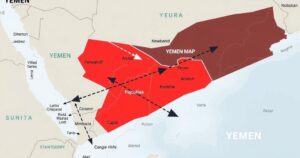Seismic Alarm: 7.6-Magnitude Earthquake Near Cayman Islands Raises Tsunami Alerts

A powerful 7.6-magnitude earthquake near the Cayman Islands triggered tsunami warnings for 12 nearby islands. Authorities in Puerto Rico and the Virgin Islands have issued advisories, with surrounding countries also preparing for potential tsunami threats. A disturbing study suggests significant earthquake risks across 75% of the U.S. over the next century, while the predictability of such events remains uncertain.
A significant 7.6-magnitude earthquake has occurred near the Cayman Islands, marking it the largest quake globally since 2023. This seismic event has led to tsunami warnings for 12 nearby islands, prompting advisories from authorities in Puerto Rico and the Virgin Islands. Nations across the Caribbean, including Colombia, Haiti, and several others, have issued threat warnings in light of the potential tsunami risk.
The Cayman Islands, comprised of Grand Cayman, Cayman Brac, and Little Cayman, are situated south of Cuba and west of Jamaica. Renowned for their picturesque beaches and vibrant tourist industry, the islands are now facing potential threats from tsunami activity. The recent earthquake necessitates heightened awareness and preparedness among residents and visitors alike.
A disturbing study has indicated that as much as 75% of the United States could face significant earthquakes in the next century. By analyzing geological history, seismic patterns, and advanced data collection methods, researchers have identified over 500 fault lines across the nation that pose a risk for future seismic activity. The United States Geological Survey (USGS) has noted a historical prevalence of seismic events within the past 200 years, impacting 37 states with tremors exceeding magnitude 5.
Despite these alarming statistics, the USGS emphasizes that earthquake prediction is an unreliable science. “No one can predict earthquakes,” they assert, pointing out the critical importance of studying faults and historical quake data to evaluate the probability and intensity of future seismic occurrences.
The article discusses the implications of a 7.6-magnitude earthquake near the Cayman Islands, highlighting the immediate tsunami threats to several Caribbean nations. It provides context about the geological risks and historical seismic activity in the broader context of the United States’ vulnerability to earthquakes. Scenarios of potential seismic threats are explored using scientific research on fault lines and earthquake patterns. The inherent challenges of earthquake prediction are also critically assessed, making it clear that while risks are documented, precise forecasting remains out of reach.
In summary, the recent powerful earthquake near the Cayman Islands has elevated tsunami concerns across the Caribbean, impacting numerous nations. The geological vulnerability of both the islands and the United States emphasizes an urgent need for preparedness. While important research identifies potential seismic activities, it is vital to approach earthquake prediction with caution, recognizing that such events cannot be precisely forecasted. The data stresses the importance of understanding historical trends to better inform future safety measures.
Original Source: www.irishstar.com








